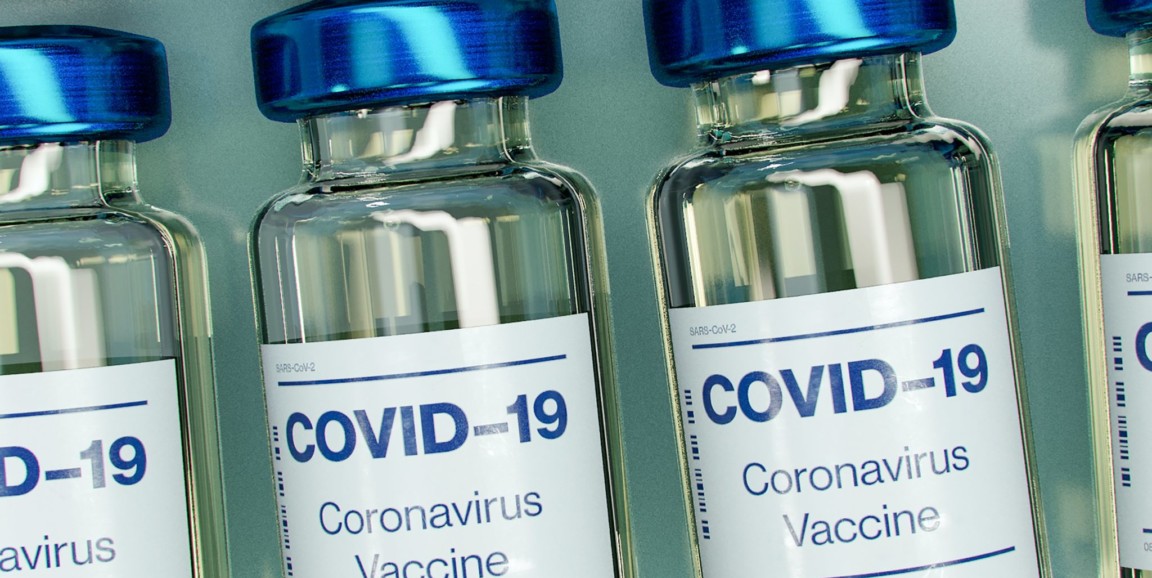For nearly a year, Rhiju Das, PhD, Stanford associate professor of biochemistry, and Maria Barna, PhD, Stanford associate professor of genetics, have been perfecting a technique to stabilize RNA molecules in vaccines, such as those for COVID-19.
Their approach could increase the shelf life of these delicate vaccines by a factor of three or more, making it easier for officials to store and transport them to benefit the public.
Their work comes in parallel with a huge, successful push to establish RNA vaccines to combat the COVID-19 pandemic. While traditional vaccines include antigens that spur immune cells to create antibodies against a disease, RNA-based vaccines instead provide instructions for the body to create those antigens, to which immune cells then respond.
This new configuration offers an appealing option to vaccine makers because the process of creating new RNA sequences is relatively easy to do in the lab. But RNA vaccines come with their own set of hurdles. The RNA molecules are finicky and fragile, and they need to be kept at ultra-cold temperatures to maintain their structure and ability to convey immunity to the target virus.
Das and Barna worked with thousands of citizen scientists via Eterna and data scientists on the collaborative platform Kaggle, to determine the most stable configuration of the tenuous RNA molecule through computational, gaming and experimental methods.
They've discovered that certain sequences and structures of RNA are stronger and longer-lasting than others, and can make the RNA vaccines even more effective. Das has also created an algorithm to automatically predict which RNA sequences and structures will yield the most stable molecule, something that he hopes will help manufacturers optimize stability of RNA vaccines available now and in the future.
I spoke with Das and Barna to learn more about their research and what it could mean for the COVID-19 vaccine.
Tell me about the nature of mRNA and what means to stabilize it. Why is that important?
Das: Anyone who works with RNA knows it's intrinsically unstable. So when the RNA vaccines were being developed, we knew there would be logistical issues, including a tendency to break down over time. But there was one approach that hadn't really been tested yet, and that involved designing RNA to form these well-defined folds that actually help to protect the RNA from nicks and cuts that ultimately lead to its degradation.
The challenge was to figure out how to redesign the RNA sequences so they still code for the same protein -- such as the spike protein that's key to the COVID-19 vaccines -- but simultaneously imbue it with the ability to exist, intact much longer.
What was your approach to stabilizing the mRNA?
Das: My lab was using computational techniques to experiment with an RNA model commonly used in vaccine development. It was this interesting puzzle: You can't just change the sequence of the RNA to whatever you want -- RNA sequences are specific to the proteins for which they code.
But it turns out you have some flexibility, that is, more than one RNA sequence can code for the same protein. In fact, there's quite a lot of wiggle room. So you can radically change the way the RNA looks in terms of its sequence and the way it folds up, while maintaining the code with the same protein. So we were able to figure out certain sequences and folding patterns that should impart more stability than the original sequence, extending an RNA's lifetime by at least two-fold, maybe longer.
Barna: We then took it a step further. My lab specializes in RNA translation inside cells -- which is when the genetic code is turned into protein -- and we focused on optimizing a special part of the RNA sequences known as the untranslated region. We altered these regions and tested how they affected the stability of hundreds of RNA sequences generated by Rhiju's lab.
What was the outcome?
Barna: The day we got the result was one of the most exciting days in our lab. We were able to achieve an increased stabilization by a factor of five. And what's really exciting is that the RNA was more stable at room temperature, which is how an RNA vaccine would be administered.
In addition, we also found that the RNA was more stable, and therefore potent, in a living cell. So our combined technique not only extended how long the RNA could last in a syringe, but also its ability to deliver genetic messages into a cell for translation into proteins -- something that's key to a successful vaccine.
Can your findings help enhance the COVID-19 vaccines currently available?
Das: We certainly hope so. We've applied our stabilization principles to a particular protein that most, if not all, vaccine makers are harnessing as the lynchpin of their vaccine -- the spike protein. We've designed a stabilized version of the spike protein for some of these companies to test in their laboratories.
Barna: There's still a lot of work to do, but our hope is that the stabilized spike protein can allow the vaccine to have a shelf life that's three times as long and an immunization effect that's three times as potent. That's significant -- if it's three times more stable, could it be stored it, for example, in pre-loaded syringes at room temperature? That would avoid the use of freezers to ship and store vaccines altogether, which may lead to more efficient delivery and distribution of the vaccine worldwide.
Photo by Daniel Schludi




